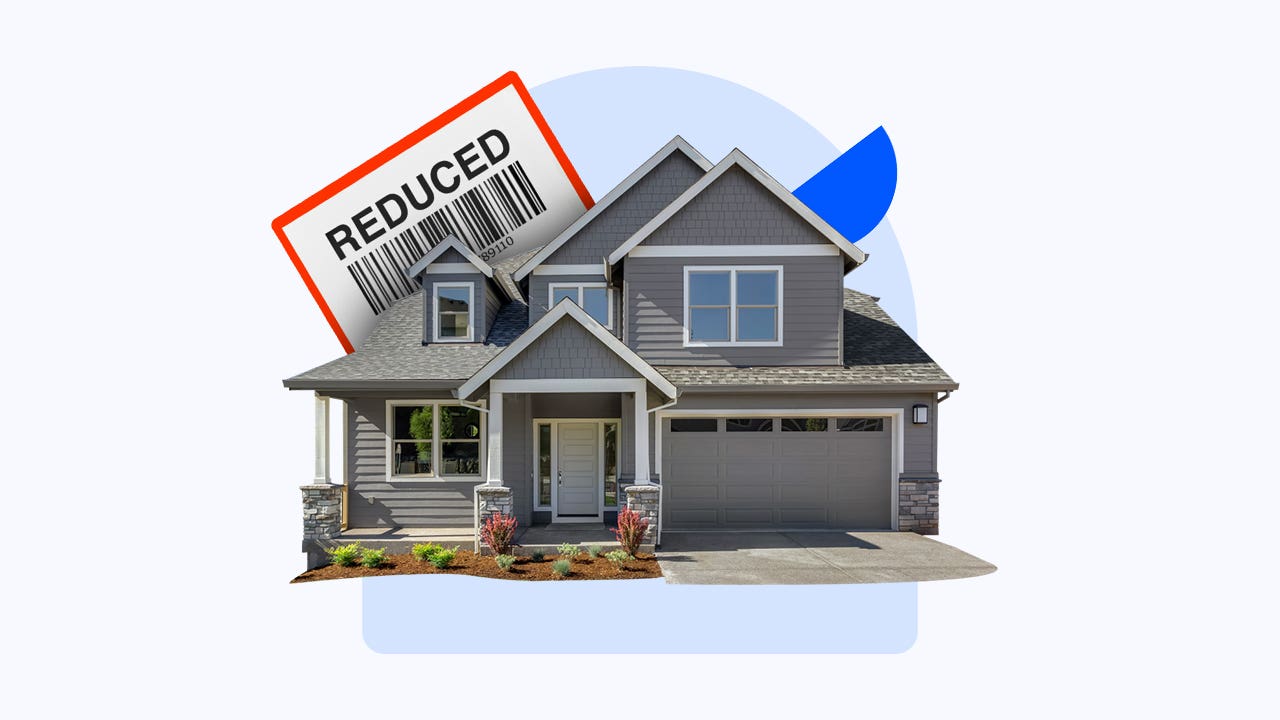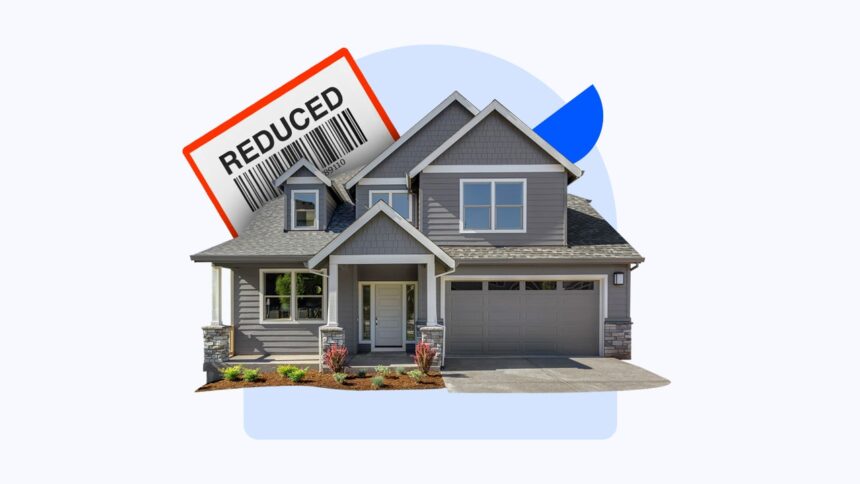
Images by GetTyimages. Illustrations by Hunter Newton/Bankrate
Key takeout
-
Refinancing your mortgage includes costs such as closure fees, as the original mortgage did.
-
Choosing to refinance unclosed costs will save you money in advance, but you may be able to pay a higher interest rate for returns.
-
Comparing offers from multiple mortgage lenders will help ensure low-cost refinances.
Refinance allows you to reduce your mortgage interest rates and monthly payments, resulting in long term savings. However, refinance means getting a new mortgage to replace your current loan. And, like there were costs like closing costs, when you get your first mortgage, there are costs associated with refinancing. Here’s how you can reduce the cost of refinancing:
How much does it cost to refinance?
Refinancing your mortgage is not free. Includes closure costs. These include:
Generally, the cost of refinancing closures equals approximately 2-5% of the new loan amount. The mortgage refinance balance will be lower than the original loan balance, but this could still increase. For example, for a $250,000 loan, you’re talking between $5,000 and $12,500.
Lenders may advertise low-cost refinances, but this usually means paying higher rates than their competitors.
Please note that some lenders will allow you to negotiate or waive certain fees. Your lender should provide you with a complete summary of your loan estimate fees.
How to get a low-cost refinance
Follow these steps to reduce the cost of refinancing.
1. Get the lowest possible rate
Eligibility for the lowest possible mortgage refinance rate is one of the best ways to save money in the long term.
- Please check your credit report. If you find any errors, please request that they be fixed. This will help you improve your score.
- Improve your credit score. The best way to improve your credit score is to pay off your debts on time. The lower your debt compared to your credit limit, the better.
- Building savings. With more savings, you may be seen as having less risk and as a result, earning a better rate.
- Choose your loan terminology wisely. A shorter period of a loan usually means a lower fee, but you will get a higher monthly payment. If you can afford a high payment with a 15-year refinance, you may be able to earn better interest rates than what you receive in a 30-year term.
- Compare prices online. We assess the refinance rates of your store online and online to know what to expect. Look for APRs that include annual rates or fees. This is a more comprehensive estimate of the cost of a mortgage than interest rates alone.
- Lock your rate. When refinancing is approved, check if you can lock your mortgage rate. This will protect you from rising rates as long as the loan closes before the rate lock period expires. If the rate drops during the lock period, the lender may allow you to take a new, lower rate.
The more you save on your mortgage each month and overall, the faster you will recover the cost of refinancing.
2. Consider refinancing unclosed costs
One way to get a low-cost refinance is to avoid the closure costs altogether. Refinancing for unclosed costs will not incur any advance fees. It saves money, at least in the short term. But you too would like to ensure you are still saving money in the long term.
There are two main ways to help you refinance unclosed costs.
- Higher interest rates: Lenders may charge higher interest rates to compensate for refinancing for unclosed costs. The lender is still receiving what you would have paid for at the closing costs as you are paying more profits.
- Prices will be deployed to principals: Lenders can add closure costs to their overall loan balance. It’s convenient – you don’t need to dig cash on the closing day – but it increases the total you are borrowing and the amount of interest you are calculating.
Within five years, if you don’t stay home for a very long time, refinancing unclosed costs can work well. If you can save on the overall cost before planning to move, it is worth the cost and even leads to a net profit. However, if you plan to stay at a home for another 15 or 30 years, the cost of relatively high interest rates will begin to be added.
3. Compare mortgage lenders
You do not need to refinance with your current lender. You may get a better mortgage rate just by shopping with multiple lenders.
Additionally, if you receive an attractive quote from one lender, you can use it to your next lender or your primary lender.
Where should I start? Bankrate has compiled a list of top mortgage refinancing lenders to consider when shopping for low-cost refinancing. You can also read reviews of mortgage lenders to learn about the experiences of other borrowers.
4. Negotiate the closing costs
Try negotiating the closing costs with your lender. In some cases we may offer exemptions or discounts. Sometimes, if you are already a borrower with a lender, or if you can show other persuasive reasons – to choose another lender with a better offer – you may be able to take a break.
How to calculate whether refinancing is valuable to you
Generally speaking, when deciding on a refinance, you want to weigh it.
- Refinance costs
- How much will you save by refinancing?
- How long do you plan to stay at home?
Once you know these three pieces of information, you can calculate the intrusion point, or the amount of time you need to keep a refinanced mortgage to recover costs. Your damage is the total cost of refinance divided by monthly savings.
Let’s say you paid $5,200 closing costs to refinance your mortgage. And you save $145 a month by receiving a lower fee. In this case, you will break even after about 36 months or 3 years after your refinance. If you’re planning on staying at your home for at least a long time, then a refinance is probably worth it.
Bankrate’s Mortgage Refinance Calculator helps you run the numbers and see what’s best for you.
FAQ
Was this page helpful?
Why you want feedback?
Feedback helps us improve our content and services. It takes less than a minute to complete.
Your response is anonymous and will only be used to improve our website.
Helps to improve content


